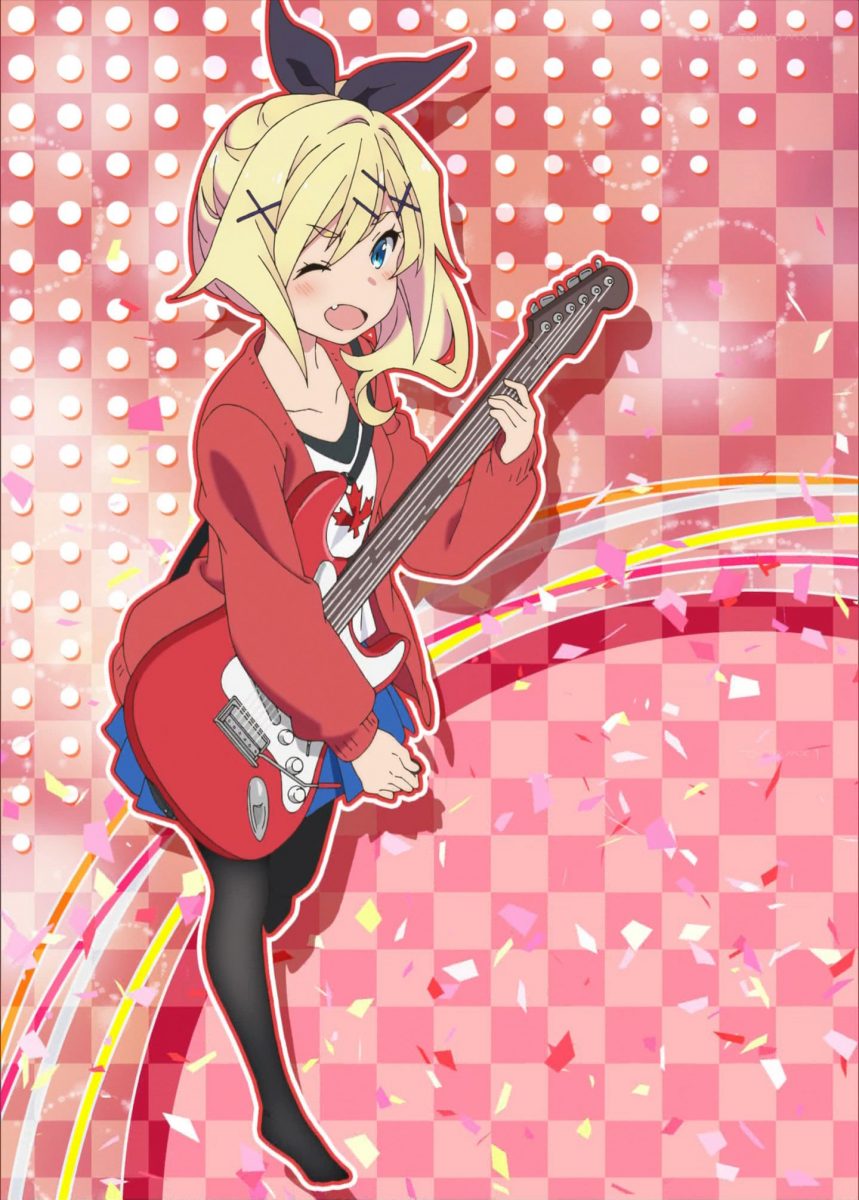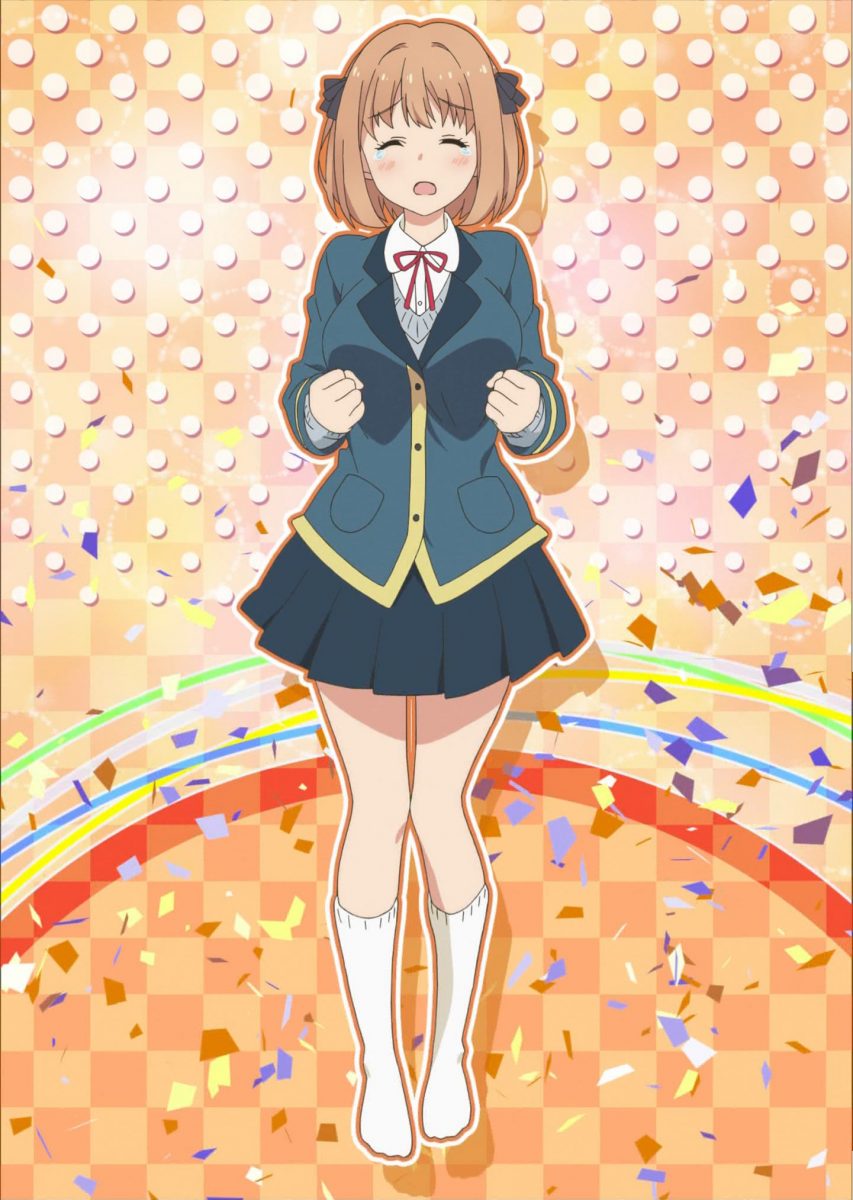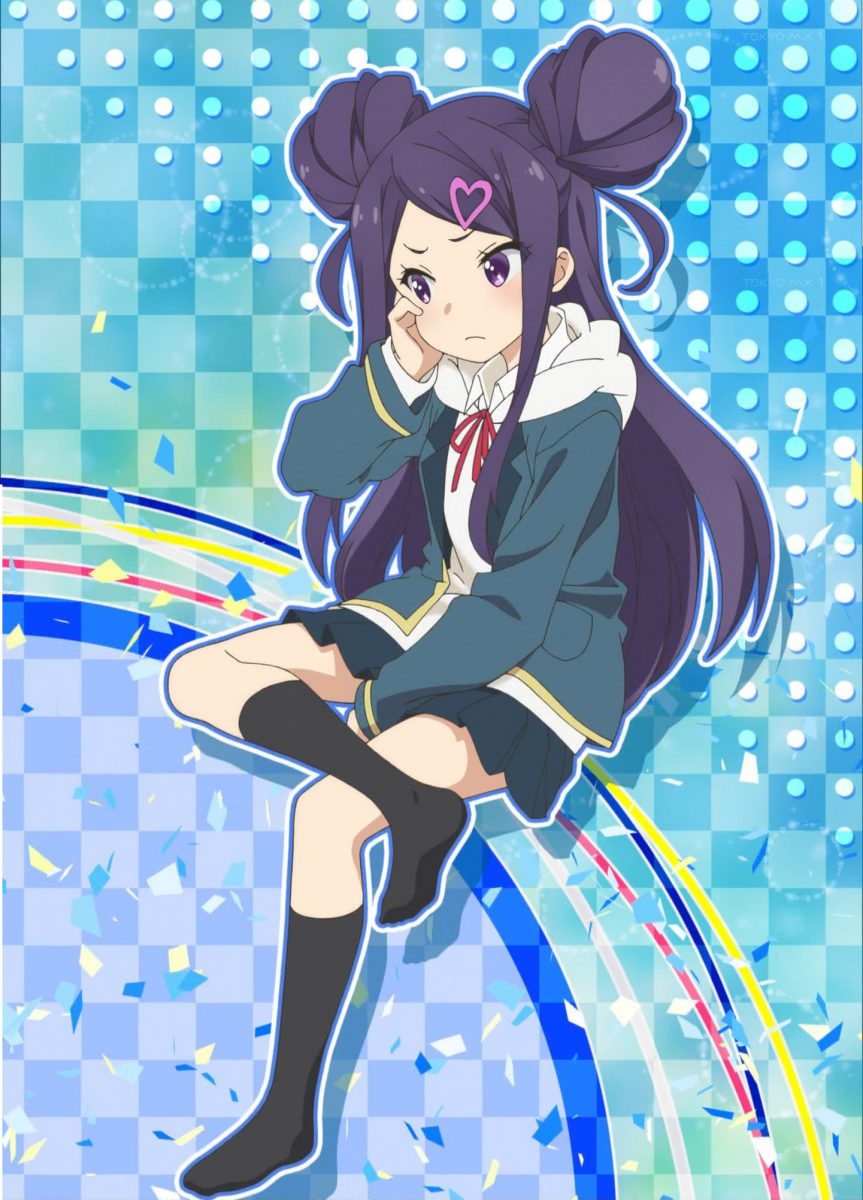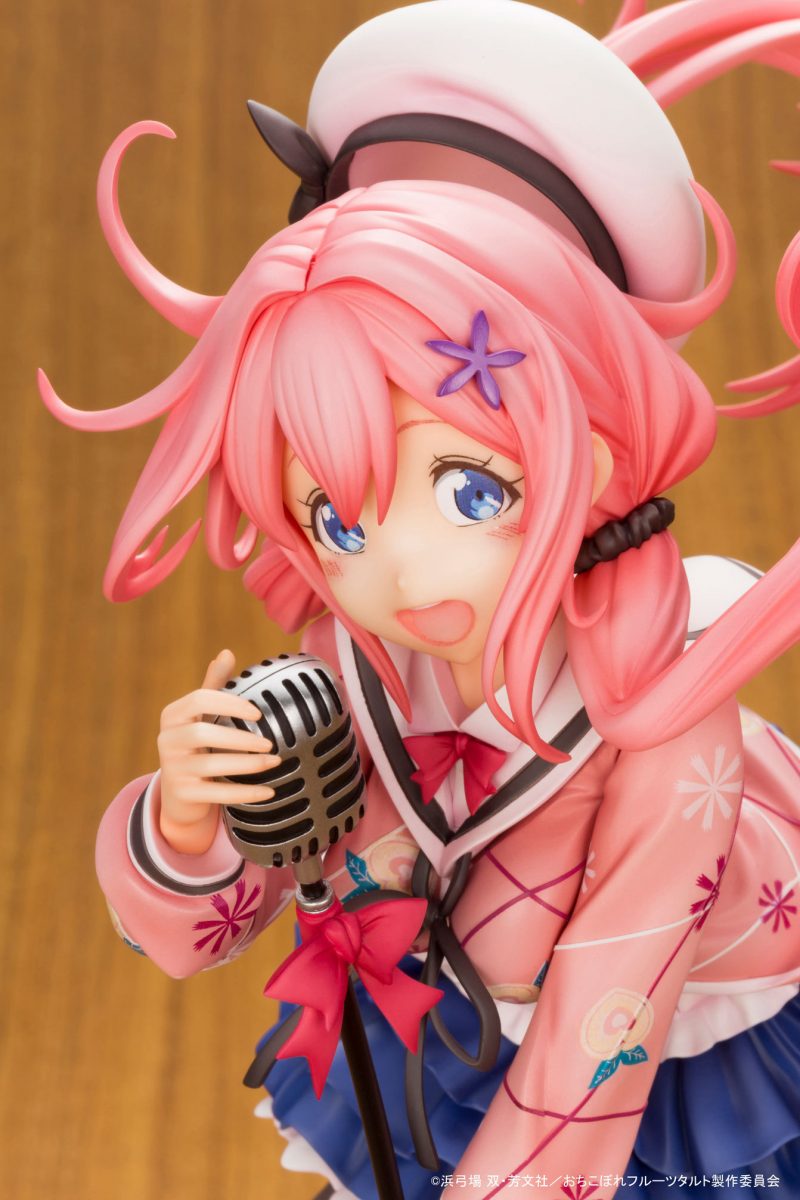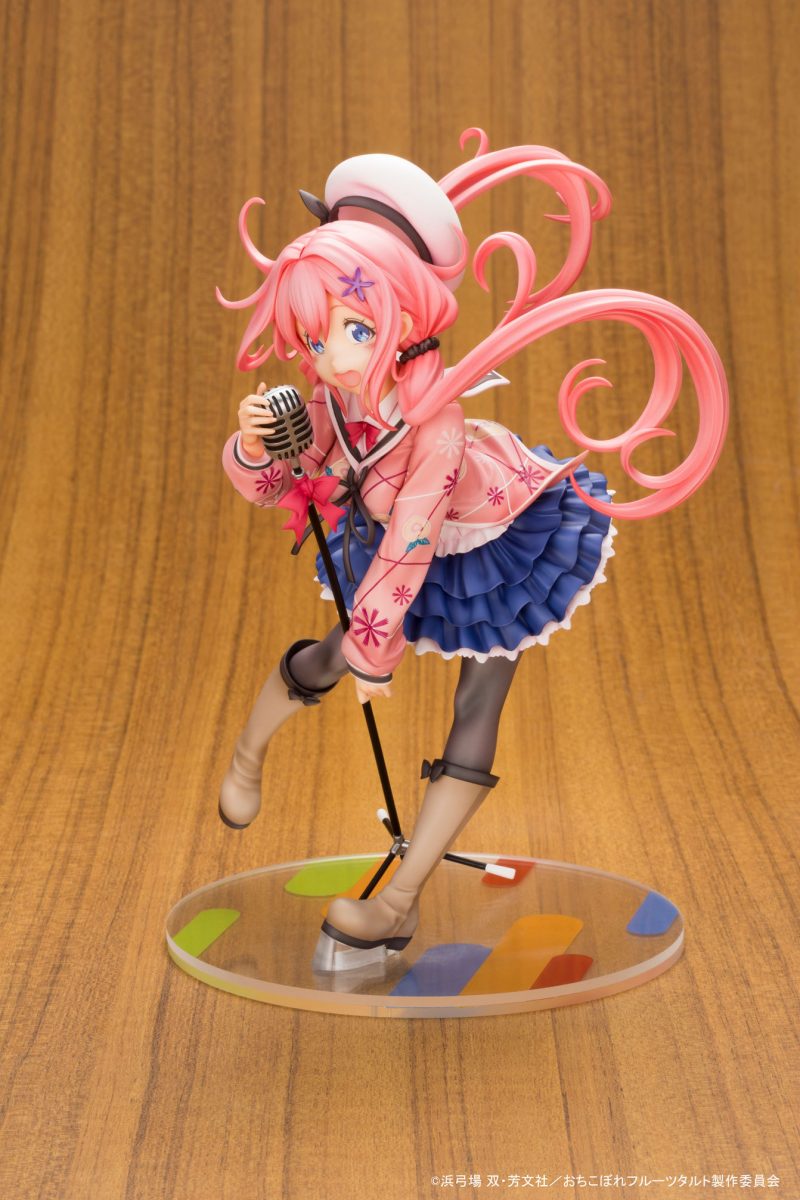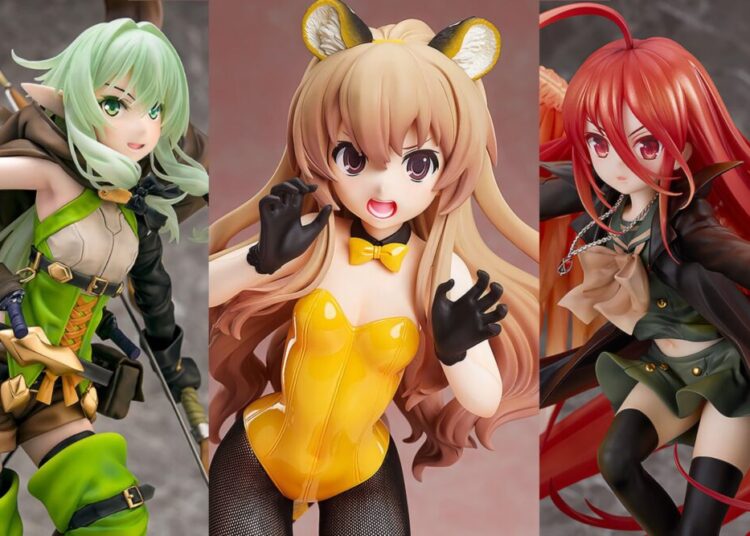The 2020 Fall anime season marches on, and I’m watching as many series as I can to pick the best ones to recommend to you. One show I fell immediately in love with is Dropout Idol Fruit Tart (aka Ochikobore Fruit Tart), an adorable slice-of-life anime based on a 4-koma manga about four unpopular idols (plus one more later) trying to make it to the big time. It’s got just the right balance of cute characters, humor, music, and ecchi to help us relax in these stressful times. Let’s learn more about the show!
Why I’m Loving Dropout Idol Fruit Tart
Based on a popular manga from Manga Time Kirara running since 2014, Dropout Idol Fruit Tart follows Sakura Ino, a girl who’s come to Tokyo for the first time to realize her dream of becoming an idol. She joins a talent agency called Rat Production where she becomes part of a “failed idol” unit called Fruit Tart with three other girls. The group needs to succeed or the house the girls live in will be torn down.
In addition to the cute and optimistic Sakura, the other characters are Roko Sekino, a former child star who’s got a complex about her short 140 cm (4’7″) height, Hayu Nukui, a blond half-Canadian (?) girl who wants to be a serious musician, and Nina Maehara, a busty failed swimsuit idol who brings “plot” to the story. It’s like Comic Girls with idol jokes instead of manga jokes.
It’s natural for anime genres to evolve as time goes by. Early series like Azumanga Daioh, Lucky Star, and K-On! introduced us to the “slice of life” genre (called nichijo-kei in Japanese), in which we follow various characters as they go about their normal lives, with cute or amusing things happening but no real story or goals for the characters to achieve. It’s just a really great way to relax and get away from all the stresses of life.
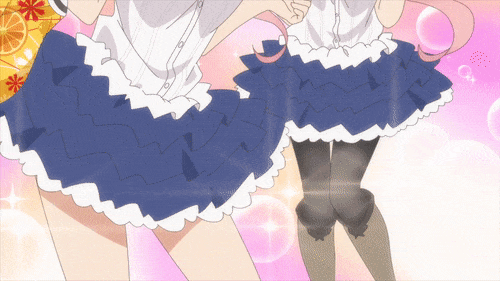
The genre started to evolve and change, giving us offshoots like “cute girls doing cute things” (CGDCT), which focuses on the extreme moe charm of girls running a coffee shop in Is the Order a Rabbit?, or girls experiencing delicious food and light yuri in Gourmet Girl Graffiti. Next came “cute girls learning a new hobby” in which girls pick up some new pastime, like learning to camp (Yuru Camp), learning about astronomy and geology (Koisuru Asteroid), or discovering the joys of competitive rock climbing (Iwa-Kakeru! Climbing Girls). This last genre often receives sponsorship from companies who know a rush of new anime fans rushing to buy their products will pay off financially for them.

Dropout Idol Fruit Tart is part of a sub-sub-genre I like to call “cute girls doing cute and ecchi things,” since it’s about the cute girls, but also about the sexual gags that crop up in every episode, whether it’s Nina’s accidental oppai explosion or the light yuri gags that can be expected whenever anime girls live under the same roof. Some other examples of this “sexy slice-of-life” genre include Hinako Note and Slow Start.

Besides the cute jokes the show gives us as the idols try their best to become famous, there are songs the girls perform, dancing and singing while they play. And Dropout Idol Fruit Tart seems to have done the impossible by showing us idols dancing and performing without resulting in super-annoying CGI that shows like Love Live! Nijigasaki High School Idol Club or Zombie Land Saga employ. This wins a lot of points with this cynical old-school anime fan.
I love it when studios find ways to signal their dedication to a project to fans, and one way they can do this is creating a figure for us to preorder right as a new show starts, rather than waiting 6 months after the series has ended, and fans have forgotten about the show. And this time, Kadokawa and the other partners have done a great job, giving us a super cute figure of Sakura right from the start.
Why do the Japanese say “Fruits Tart”?
As any fan of the “Fruits Basket” anime will tell you, the idol unit in the series isn’t called Fruit Tart, but “Fruits Tart,” with a plural ‘s’ on the end. For odd reasons for phonetics, Japanese tend to import certain English words — such as fruits, sports, suits, and sheets — in their plural form, even if they’re discussing a single object. Sometimes is done because “sports” (スポーツ) is easier to say and write in katakana than “sport” (スポート), and other times it’s to keep two similar sounding words from bumping into each other (so flute フルート can be easily discerned from fruit フルーツ). It does take rather a while to get used to packing a “suitscase” when getting ready for a trip, but that what a suitcase is called in Japanese.
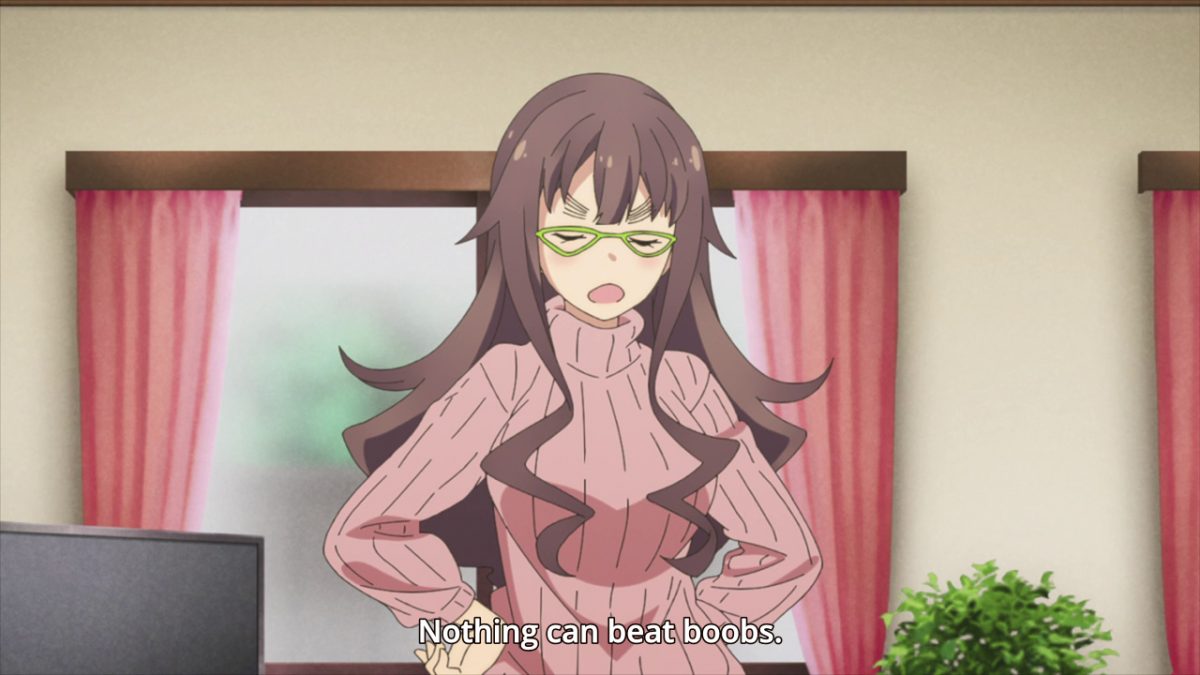
Thanks for reading! Will you be watching Dropout Idol Fruit Tart? Tell us in the comments below, or on Twitter!
November is here again, and you know that that means: J-list is having a Neverending Nut November (aka Nutvember) sale, giving you a huge 5x J-List Points bonus on all our signature ecchi products for guys and girls, from ero toys to high-quality massagers to the best lotions in the world. Browse our new stock of ecchi products here!


